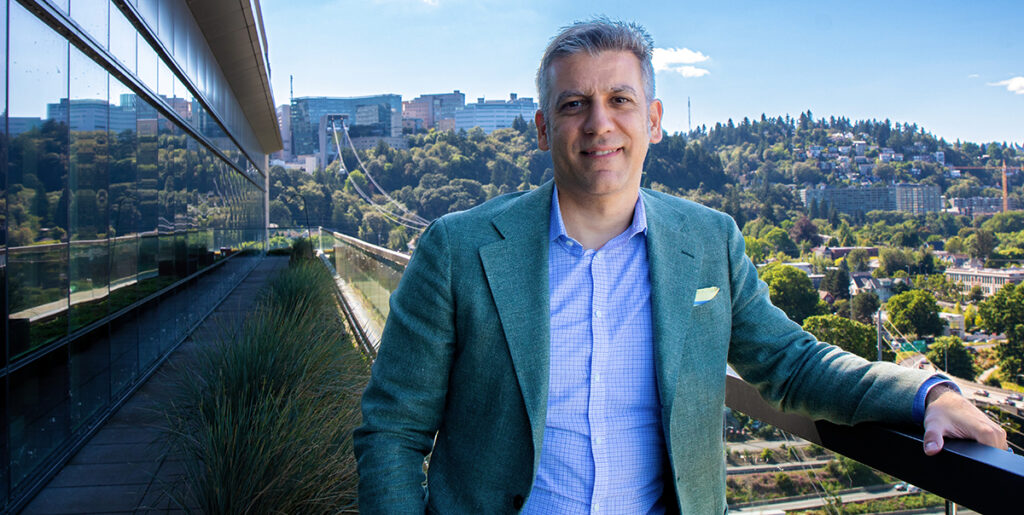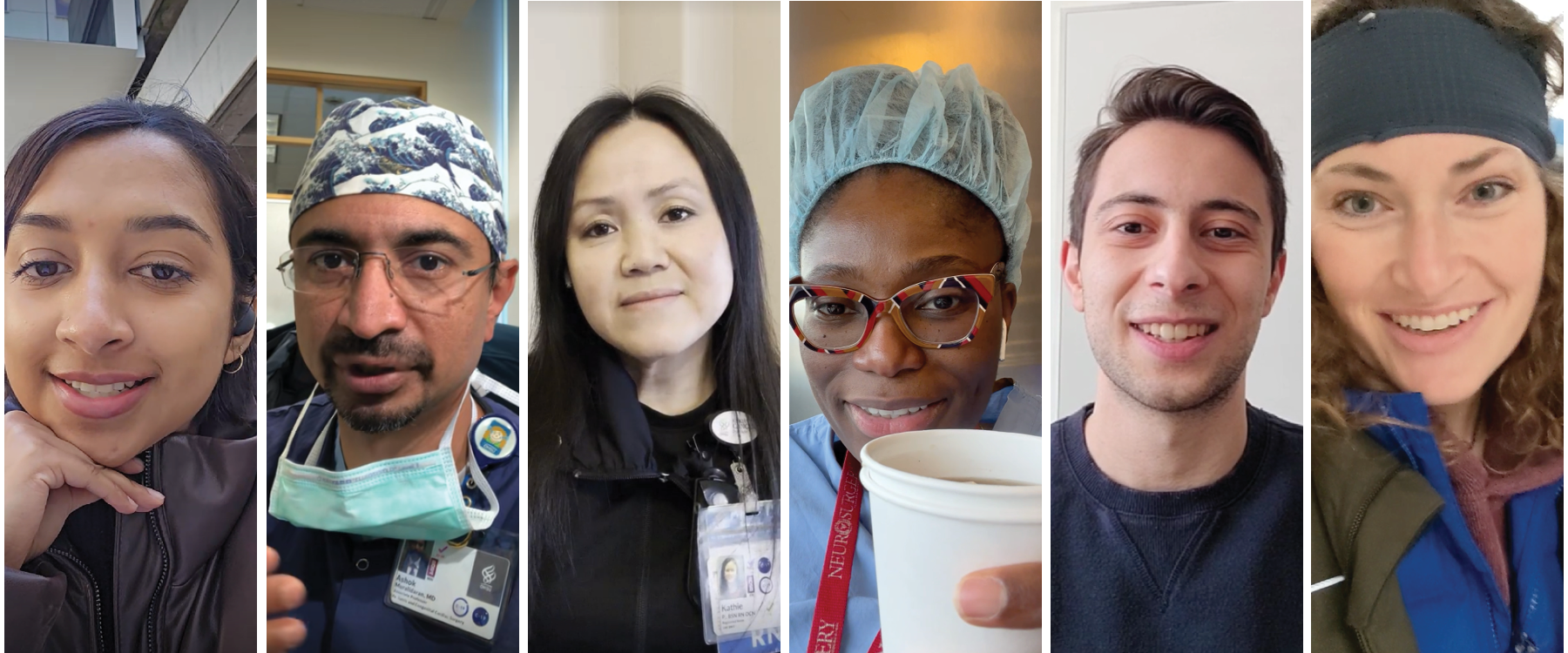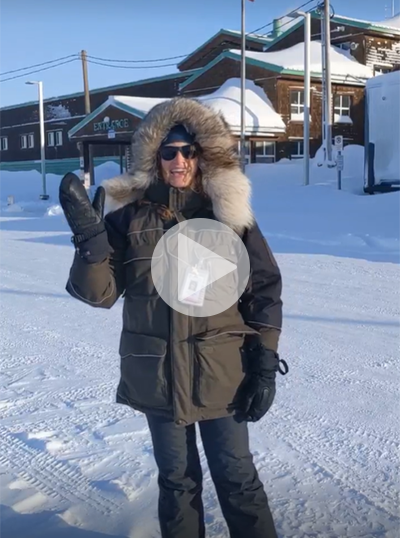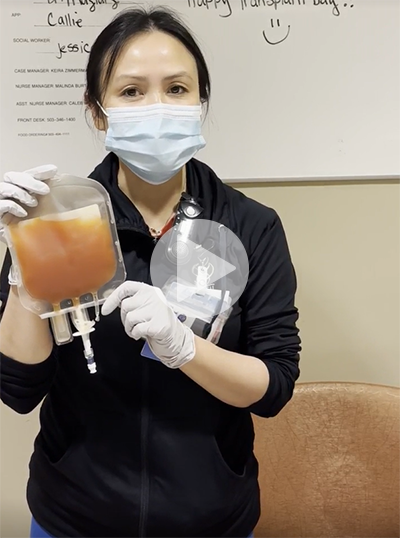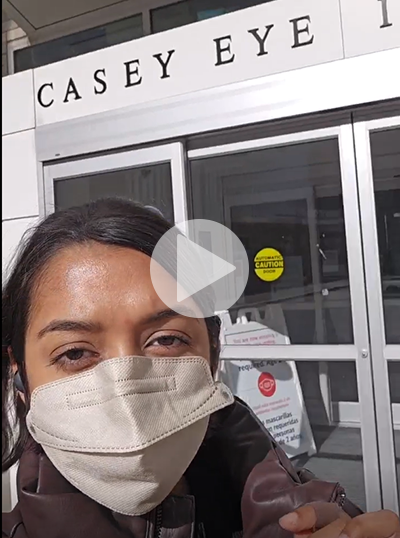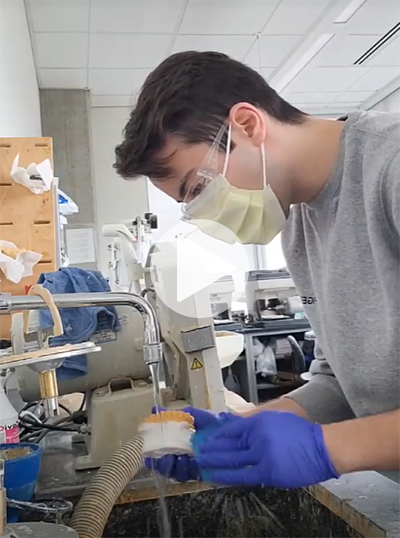Want a glimpse of the power one day can have? Look no further than OHSU.
Every minute of every hour of every day, OHSU’s doctors, nurses, students, researchers, caregivers and alumni heal, discover, collaborate and learn. From clinics to classrooms, operating rooms to research labs, the power of one day reverberates across the OHSU community, across Portland, throughout Oregon and beyond.
And it all starts here.
A Day in the Life at OHSU is a timeline, a chronological mosaic built from various snapshots and stories illustrating how OHSU’s bustling community spends an average day. It does not precisely depict the events of a specific day; rather, it depicts the everyday activities and actions that shape OHSU and its impact.

At OHSU and OHSU Doernbecher Children’s Hospital, one day can make all the difference. On May 23, join us for OHSU Give Day, and see for yourself how one day can create thousands of healthier tomorrows.
8 A.M.
Pediatric heart surgeon Ashok Muralidaran, M.D., section chief of pediatric and congenital cardiac surgery at OHSU Doernbecher Children’s Hospital, has already attended the morning meeting. Soon, he will make his rounds through the ICU before meeting a patient and their family for the morning’s surgery.
Click or tap the image to watch
“A Day in the Life” with Ashok Muralidaran
9 A.M.
OHSU School of Nursing alumna Sarah Paeth, B.S. ’14, M.N. ’16, CNM, has trekked through the snow to arrive at the critical access hospital in Kotzebue, Alaska — 40 miles north of the Arctic circle. Paeth is a nurse midwife, and the hospital serves remote Inuit villages and communities in northern Alaska.
Click or tap the image to watch
“A Day in the Life” with Sarah Paeth
9:30 A.M.
Josie Gold, of Portland, visits OHSU’s COVID-19 therapy clinic to receive remdesivir infusions. OHSU is the only hospital in Oregon that offers the antiviral medication on an outpatient basis.
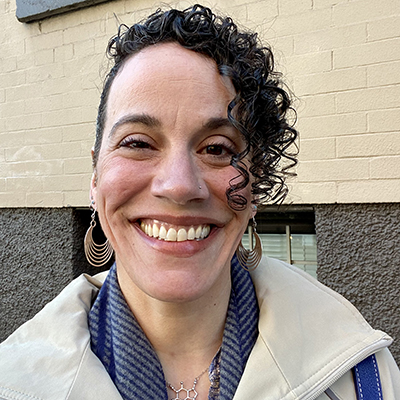
“I was feeling really crappy when I came in for my first infusion. But the next day, I had less fatigue and significantly fewer muscle aches. And it became easier for me to breathe. I improved slowly and steadily, and I’m grateful that I was able to receive that treatment.”
10:30 A.M.
Kathie Phan, RN, an oncology nurse on the OHSU Knight Cancer Institute’s bone marrow transplant floor, holds a bag of stem cells she will soon infuse into a patient.
“Every time I am done infusing stem cells, I do get a little bit emotional. A complete stranger just donated their stem cells to my patient just to give them a second chance at life.”
Click or tap the image to watch
“A Day in the Life” with Kathie Phan
11:30 A.M.
Fetal surgeons Andrew Chon, M.D., assistant professor of obstetrics and gynecology, and Raphael Sun, M.D., assistant professor of surgery, are performing fetoscopic laser surgery on Adriana Romero Villarreal’s twins in utero. During an ultrasound at OHSU, Romero Villarreal’s care team discovered the twins had twin-to-twin transfusion syndrome, a life-threatening condition in which blood flows unequally between the fetuses in the uterus.
OHSU is one of five institutions nationwide to provide medical and surgical interventions under one complex fetal care program.
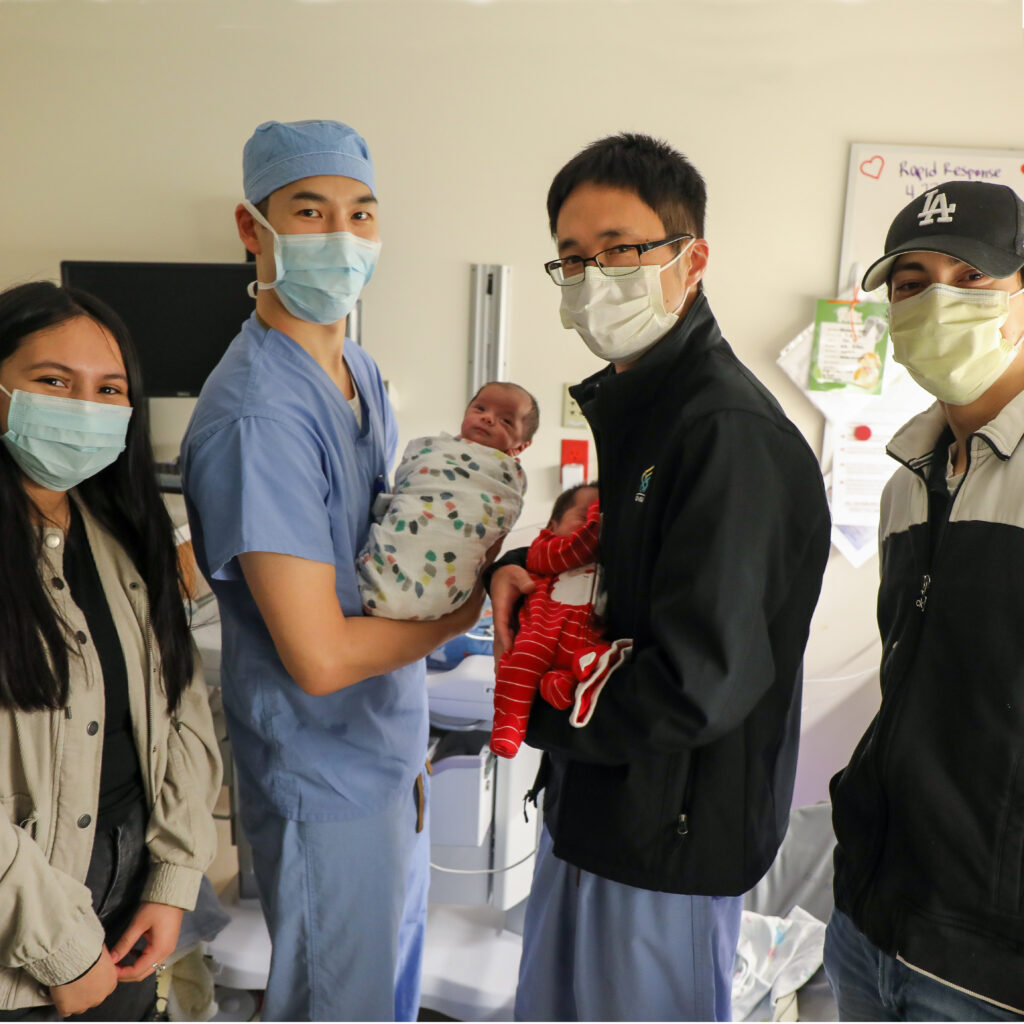
12 P.M.
Skull base surgeon Olabisi Sanusi, M.D., an assistant professor of neurological surgery in the OHSU School of Medicine, rests for a moment in the staff lounge between surgeries.
“On long days like this, I do like to get myself a little snack or a drink, and then enjoy that while looking out the window. It gives me sense of peace, and it also helps me re-center myself in preparation for the next case.”
Click or tap the image to watch
“A Day in the Life” with Olabisi Sanusi
1:30 P.M.
Biomedical engineering Ph.D. student Shanjida Khan conducts research at the OHSU Casey Eye Institute’s COOL (Center for Ophthalmic Optics and Lasers) Lab.
“Our system that we built, we mainly focus on looking for certain features in the cornea. With current clinical applications, while they do have that ability, it’s a long wait process. Having something that can tell us in real time what we’re looking for, I think clinicians will appreciate that.”
Click or tap the image to watch
“A Day in the Life” with Shanjida Khan
3 P.M.
Maria Rodriguez, M.D. ’04, R ’08, M.P.H., director of the OHSU Center for Women’s Health and the recently established OHSU Center for Reproductive Health Equity, meets with her team to discuss the far-reaching effects of legislative policy changes targeting reproductive care in the U.S.
“Reproductive health is fundamental right, yet so many Americans — especially people of color, immigrants, low-income individuals and LGBTQ+ people — do not have equal access to care.”
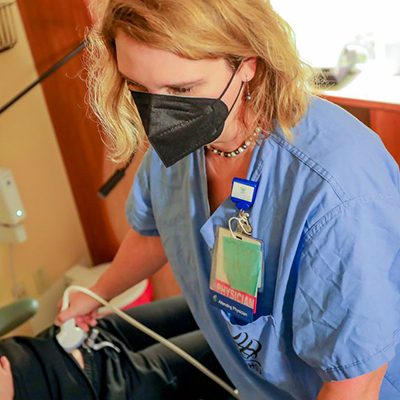
4 P.M.
Fourth-year OHSU School of Dentistry student Aria Javaheri completes some lab work in Skourtes Tower. Later, he will use the results to discuss a proposed treatment plan with a patient.
“I like to have a positive impact on the community, and this is kind of why I am in this profession. I enjoy doing what I do and that brings satisfaction.”
Click or tap the image to watch
“A Day in the Life” with Aria Javaheri
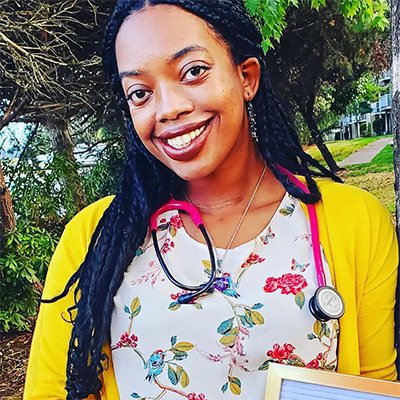
5:30 P.M.
Anna Abel, a fourth-year nursing student at the OHSU School of Nursing Monmouth, prepares to lead a meeting of the Black Student Nurses Umoja. a student group of which Abel founded.
“As I go through to graduation, I want to continue to see [progress being made to combat racism]. I want to continue to help with that and be able to leave this school knowing there are going to be students and cohorts coming after me that will be able to have more information because we laid that groundwork.”
6 P.M.
Kim Dody, RN, takes stock of the available food in the Annie’s Pantry in the family lounge in 10 North at OHSU Doernbecher Children’s Hospital. Annie’s Pantries, which are filled with free food available for families of Doernbecher patients, is managed by the Nourish program, which aims to address and destigmatize food insecurity challenges among caregivers.
“We saw the ways people were falling through the cracks and going hungry. We just want to make sure that everybody is taken care of.”
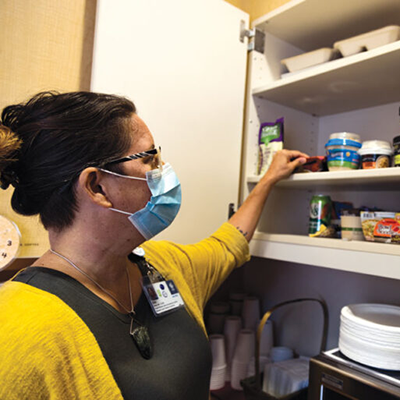
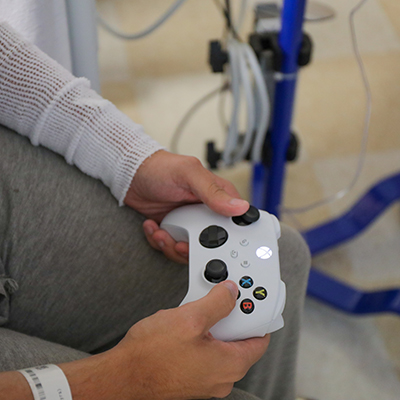
6:30 P.M.
Sam Giles le Blanc, OHSU Doernbecher patient technology specialist, shows a patient the controls for the video game “Minecraft” on an Xbox. Giles, more commonly referred to by pediatric patients as “the video game guy,” manages the therapeutic gaming program, a recent addition of the Child Life Therapy Program at Doernbecher. His position is funded by Extra Life, a fundraising program of Children’s Miracle Network Hospitals.
“Gaming can really make young people feel at home in a way that not much else can. Video games provide an escape from things going on around them, but it’s also a way for kids to connect with their friends outside the hospital.”
8 P.M.
Parents of a 3-month-old baby use an innovative digital platform to send data from home about their newborn to a team of doctors at OHSU Doernbecher Children’s Hospital. The family is one of more than 150 since 2019 to go home early from the Doernbecher NICU thanks to the Growing @ Home program, which equips parents to do feeding and monitoring typically done in the hospital from the comfort of their own home.
“It’s truly groundbreaking,” said Jamie Warren, M.D., M.P.H., head of the Growing @ Home program and associate professor of pediatrics (neonatology) at the OHSU School of Medicine. “Because the program offers access to the same tracking capabilities available here at Doernbecher, it’s allowing parents to go home and bond with their baby in a more comfortable, private setting. Research has proven that infants develop better in their home environment, so that’s where we want them to be.”
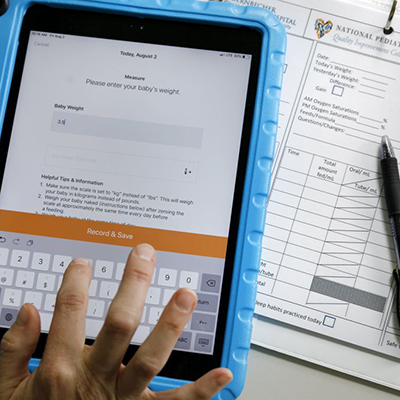
11 P.M.
“I remember in graduate school sometimes doing experiments until quite late into the evening — 11 p.m., 12 a.m., 1 a.m. — and I get this very exciting result. It actually really is a thrill. It’s a high. And I remember just walking home and sleeping and being incredibly excited to wake up very early the next morning and start the next experiment. And that’s really what keeps me going.”
Steven Mansoor, M.D., Ph.D., assistant professor of cardiovascular medicine and chemical physiology and biochemistry in the OHSU School of Medicine
